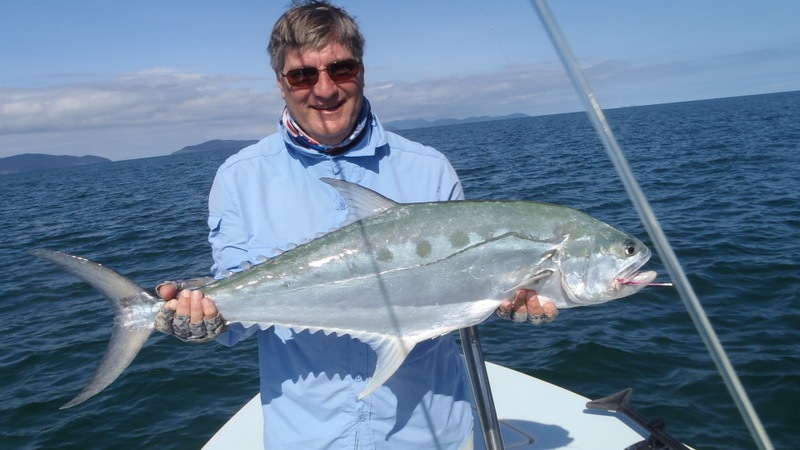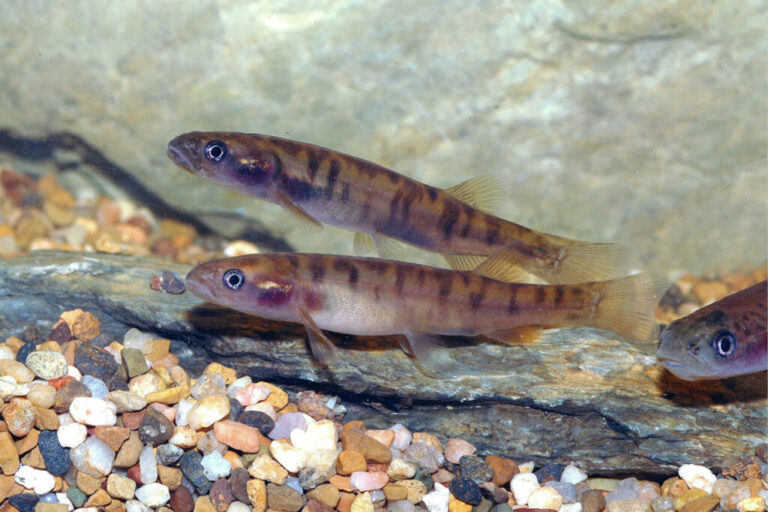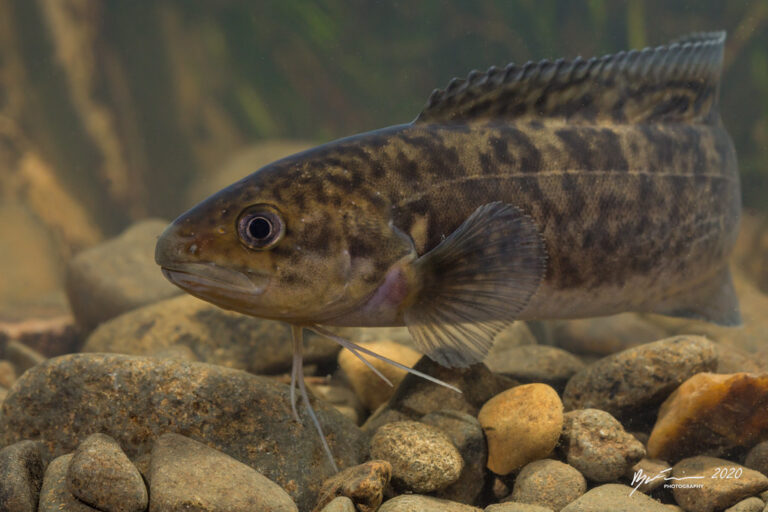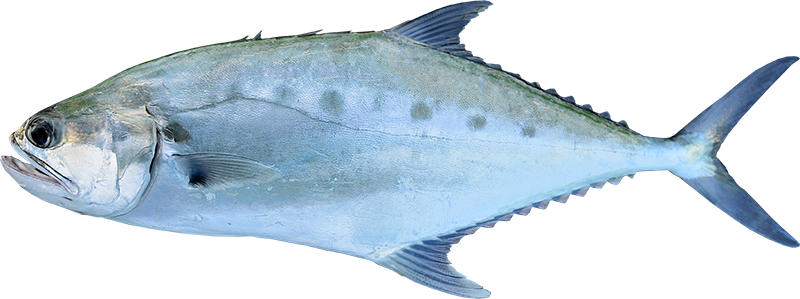
There are four types of queenfish present in Australian tropics but the two mainly encountered by most fishermen, these are the Giant Queenfish Scomberoide scommersonnianus and the Lesser Queenfish Scomberoides lysan. They are one of the most commonly encountered saltwater fish in the coastal waters of the Northern half of Australia and are often found in schools. Smaller fish are found in estuaries and inlets, with larger fish being found offshore, usually near reefs and headlands. They also love harbours and jetties where they are easily targeted by shore-bound anglers.
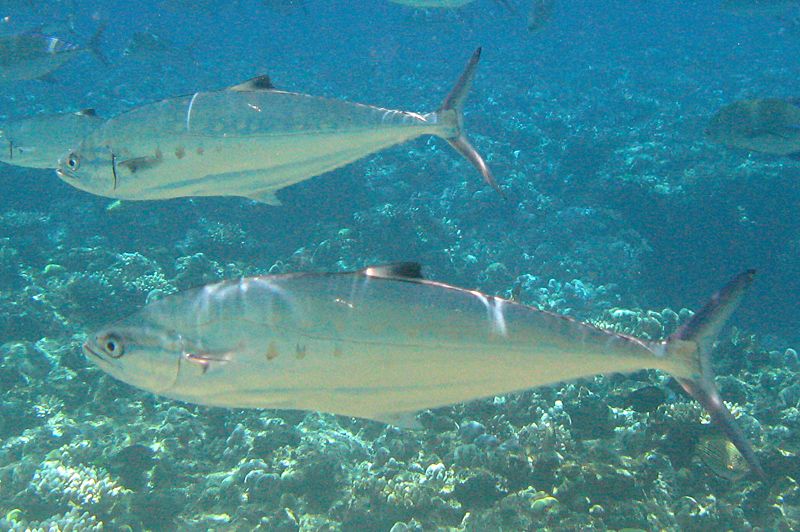
Best of all they are a perfect target for fly fishers as they will eagerly consume a fly and are a great fighting fish making long hard runs, direction changes and huge, headshaking leaps.
The Giant Queenfish is also commonly called the Talang Queenfish, Giant Leatherskin whilst the Lesser Queenfish is sometimes called the Double Spotted Queenfish. Both are also known as ”Skinnies”.
The body of a queenfish is extremely laterally compressed (hence the nickname “Skinny”) and has a very large deeply forked tail. The body and head are dusky green to a bluish back, grey to silver coloured belly, large individuals are often golden, especially towards the belly.
The Giant Queenfish has a very large mouth and extends well beyond the eyes which are located close to the snout which overlies a jutting and upwardly sloping jaw. The Giant Queenfish has 5-8 dull blotches above or touching the lateral line (in adults). The dorsal and anal fins are dusky to dark and uniformly pigmented, pectoral fins frequently have a dusky blotch (towards the base in adults). The smaller Lesser Queenfish is easily distinguished by the spots along the sides being in two rows, one above and one below the lateral line.
Giant Queenfish can reach 16kgs whilst the smaller Lesser Queenfish reaches a weight of 7kg. The most common range for both species is 3-5kg and even at this size they give a good account of themselves.
Queenies are surface feeders and love a fleeing offering, often competing and shouldering each other aside and producing some epic strikes. They respond to a variety of popular saltwater flies and are suckers for a fast retrieving popper.
A word of warning from Iain’s personal experience. These fish should be released in the water if possible or brought into the boat with the aid of a lip gripping device such as a Bogagrip. If they are still green when brought into the boat and are unrestrained they are extremely active and will flip around frantically. There are short sharp spines ahead of the dorsal fin and anal fin that can inflict painful wounds to the feet and legs of the unwary angler.
Featured image: Ken Holley with a lovely queenfish he caught at Hinchbrook, northern Queensland, in 2016.
